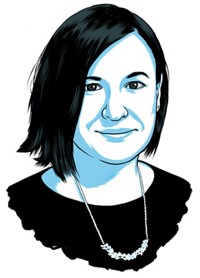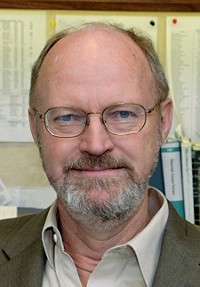Advertisement
Grab your lab coat. Let's get started
Welcome!
Welcome!
Create an account below to get 6 C&EN articles per month, receive newsletters and more - all free.
It seems this is your first time logging in online. Please enter the following information to continue.
As an ACS member you automatically get access to this site. All we need is few more details to create your reading experience.
Not you? Sign in with a different account.
Not you? Sign in with a different account.
ERROR 1
ERROR 1
ERROR 2
ERROR 2
ERROR 2
ERROR 2
ERROR 2
Password and Confirm password must match.
If you have an ACS member number, please enter it here so we can link this account to your membership. (optional)
ERROR 2
ACS values your privacy. By submitting your information, you are gaining access to C&EN and subscribing to our weekly newsletter. We use the information you provide to make your reading experience better, and we will never sell your data to third party members.
Materials
Ronald Breslow Award For Achievement In Biomimetic Chemistry
by Britt E. Erickson
January 21, 2013
| A version of this story appeared in
Volume 91, Issue 3
Sponsored by the Ronald Breslow Award Endowment
A leader in supramolecular self-assembly, Samuel I. Stupp is being honored for his work on developing bioactive materials that could revolutionize therapies in regenerative medicine. Stupp is well-known for creating an extensive platform of self-assembling molecules, especially those based on peptide amphiphiles that form nanofibers, resulting in broadly bioactive synthetic materials.
“Molecules created by Stupp can be tailored for specific cell-signaling events that promote regenerative processes,” says E. W. (Bert) Meijer, a professor of molecular sciences and organic chemistry at Eindhoven University of Technology, in the Netherlands. They have been found to promote regeneration of axons in damaged spinal cords, knee-joint cartilage, bone in a femoral defect, dental enamel in embryonic teeth, and blood vessels in heart tissue and limb muscle, Meijer notes. More recently, Stupp’s supramolecular structures “have been found to enhance functional recovery in the reserpine model of parkinsonian mice.”
Stupp, a professor of chemistry, materials science, and medicine at Northwestern University, is currently developing supramolecular systems that coassemble with biopolymers to form membranes that can act as scaffolds for artificial cells. He is also developing ordered gels that mimic the aligned extracellular matrix of tissues such as muscle, heart, and brain and supramolecular assemblies that can be used to target and deliver cardiovascular therapies to specific tissues. His systems are in development for clinical trials.
The supramolecular biomimetic assemblies developed by Stupp are able to signal cells in regenerative processes in an unprecedented fashion, say experts familiar with his work. The structures self-assemble in situ around cells, creating an artificial matrix around the cells that can bind ligands or proteins for receptor signaling. Stupp’s work in biomimetic chemistry “is an example of what chemistry could contribute to future medicine beyond the traditional pharmaceuticals,” says Robert H. Grubbs, a professor of chemistry at California Institute of Technology.
Stupp was one of the first people to introduce the use of self-assembly with designed molecules to create “bulk” functional materials, says Roeland J. M. Nolte, an organic chemistry professor at Radboud University Nijmegen, in the Netherlands. “His work evolved from organic materials to organic-inorganic hybrids, and then over the past decade to his groundbreaking biomimetic chemistry platform of cell-signaling biomaterials for regenerative medicine.”
Stupp’s interest in chemistry dates back to his early days with inspiring teachers when he was growing up in Costa Rica and later in college at the University of California, Los Angeles. He has received 33 patents, published more than 300 papers, and has earned numerous awards. He enjoys spending time with his wife, Dévora; family; and friends and enjoys all forms of art and worldwide travel.
Stupp will present the award address before the ACS Division of Organic Chemistry.





Join the conversation
Contact the reporter
Submit a Letter to the Editor for publication
Engage with us on Twitter